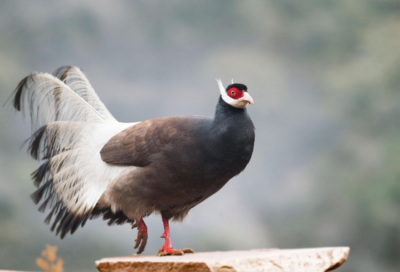

News briefing: How does free range native chicken breed? Free-range native chicken is a good project for farmers to make a fortune.
How does free range native chicken breed? Free-range native chicken is a good project for farmers to make a fortune. free-range native chicken makes use of the vast mountain forest resources in the countryside, all kinds of weeds, grass seeds, insects and so on as auxiliary feed for free-range Native Chicken, then every day to add simple rice, wheat, grains and other supplementary feed, so what free-range native chickens eat eggs?
How does free range native chicken breed?
1, Drinking Water and eating: chicks into the nursery, rest for half an hour to 1 hour, you can feed water. Generally feed water before material. Water temperature to 32 degrees or so appropriate, do not drink cold water. The first 2 days can drink dilute concentration of potassium permanganate solution, is conducive to anti-inflammatory, sterilization, prevention of pullorum chicks. After drinking water, chicks can quickly discharge meconium to stimulate appetite. Generally after drinking can be opened to eat. Spread the open feed over the light colored plastic sheet on the bedding and let the chicks feed freely. Chicks with poor digestion must be fed a diet that is easy to digest and full of nutrients. 2 days after hatching, the chicks have a good appetite. Feed time to quantitative, generally feed 80% satiety is appropriate. Over-satiety can cause indigestion; when insufficient will affect the growth and development of chicks, and even lead to pecking vices. Each feeding amount to 15-20 minutes to eat appropriate.
2. Ambient temperature and humidity: The key to Brood is to give chicks the right temperature. Take the temperature under the sterilizer as an example: 34-35 degrees at 1-2 days of age; 32-34 degrees at 3-7 days of age; 30-28 degrees at 2 Weeks; 28-26 degrees at 3 weeks. Brood in winter and spring weekly drop 2 degrees, summer and autumn weekly drop 3 degrees, down to 21 degrees so far. The relative humidity of chicks is 70-75% in the first week, 60% in the second week and 55-60% after the third week. Excessive humidity is conducive to the propagation of pathogenic microorganisms, easy to induce coccidiosis. Humidity is too small, dry will make the chicks breathe faster, the body of water with breathing and a large number of hair, abdominal residual yolk absorption is not good, affect the development of chicks.
3, pay attention to grouping, strengthen inspection: strong and weak chicks and sick chicks should be raised in groups, check the first time in the morning when feeding weak chicks, weak chicks easy to be squeezed out. The sicker chicks are eliminated immediately. The significance of regular inspection of chicken flocks is as follows:
(1) to understand the palatability of feed and the amount of feed given;
(2) to discover and treat diseases in time from the Diet, activities and feces of chicks;
(3) to find out unexpected situations in time and to deal with them in time; Cut Your losses.
4. The feeding method is grazing combined with supplementary feeding: The following two points should be paid attention to in general: male and female chickens are raised in groups. In general, chickens have long feathers, strong fighting ability, high utilization rate of protein and lysine, and high feed efficiency. Because of the difference of endocrine hormone, the weight gain is slow and the feed efficiency is poor. Male and female feeding is beneficial to improve the uniformity. The growth period uses the time supplement feed, puts the feed in the trough or directly spreads on the ground, morning and evening each 1 time, eats up until.
5, INSECT REPELLENT: General Grazing 20-30 days, it will be carried out the first insect repellent, separated by 20-30 days to carry out the second insect repellent. Is mainly the elimination of parasites in the body, such as roundworms, tapeworms and so on. Use anthelmintic, levamisole or Albendazole. For the 1st time, each chicken was given half a piece of ascaris. For the second time, each chicken was given 1 tablet of Ascaris. Can Be taken directly at night or the tablets ground into powder, and then mixed with feed for feeding. Must carefully mix the medicine and the feed evenly, otherwise easy to produce drug poisoning. The next morning to check the chicken manure, to see if there is worm discharge. And to clean up the chicken faeces, to prevent the chicken carnivorous body. If found in chicken feces have adult worms, the next night can be the same amount of insecticide 1 time.